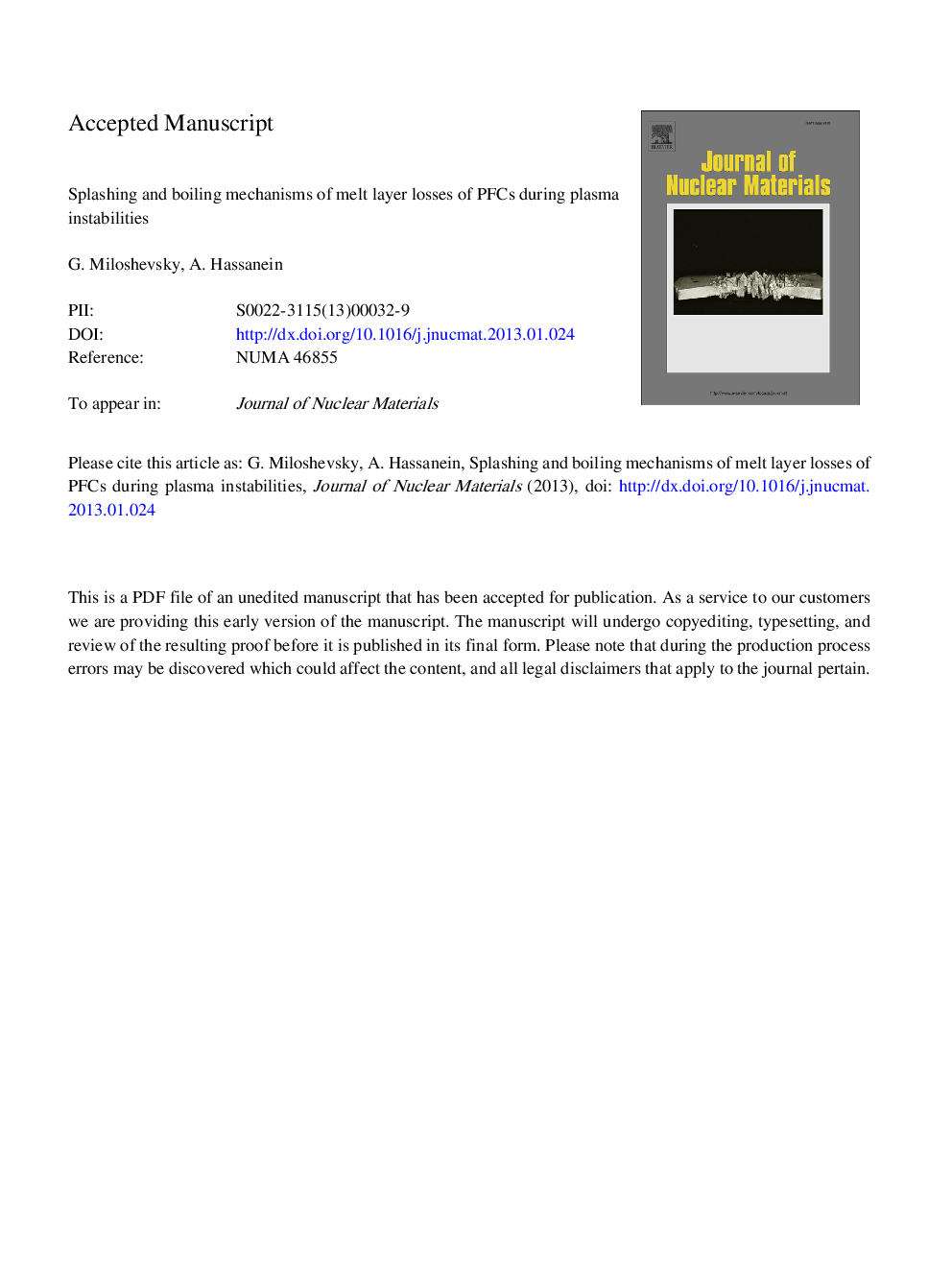| Article ID | Journal | Published Year | Pages | File Type |
|---|---|---|---|---|
| 10644965 | Journal of Nuclear Materials | 2013 | 20 Pages |
Abstract
Due to excellent thermo-mechanical properties, tungsten (W) is considered as a promising divertor material in ITER, full divertor in JET, first wall in DEMO and ASDEX Upgrade. During plasma disruptions and ELMs the W material can be severely damaged because of macroscopic melt losses resulting in short lifetime and plasma contamination. Therefore, understanding the underlying forces and physical mechanisms of the development, motion, and removal of melt W layers is very important for successful operation of fusion devices. We have performed viscous stability analysis to assess the initial conditions for the development and growth of surface waves at the plasma-liquid W interface and computational modeling to predict the effects of viscosity, heat conduction, and phase change on the stability of melt layer. The developed theory and computational models are applicable to various fusion devices including ITER, DEMO, and current devices such as JET, TEXTOR and ASDEX.
Related Topics
Physical Sciences and Engineering
Energy
Nuclear Energy and Engineering
Authors
G. Miloshevsky, A. Hassanein,
